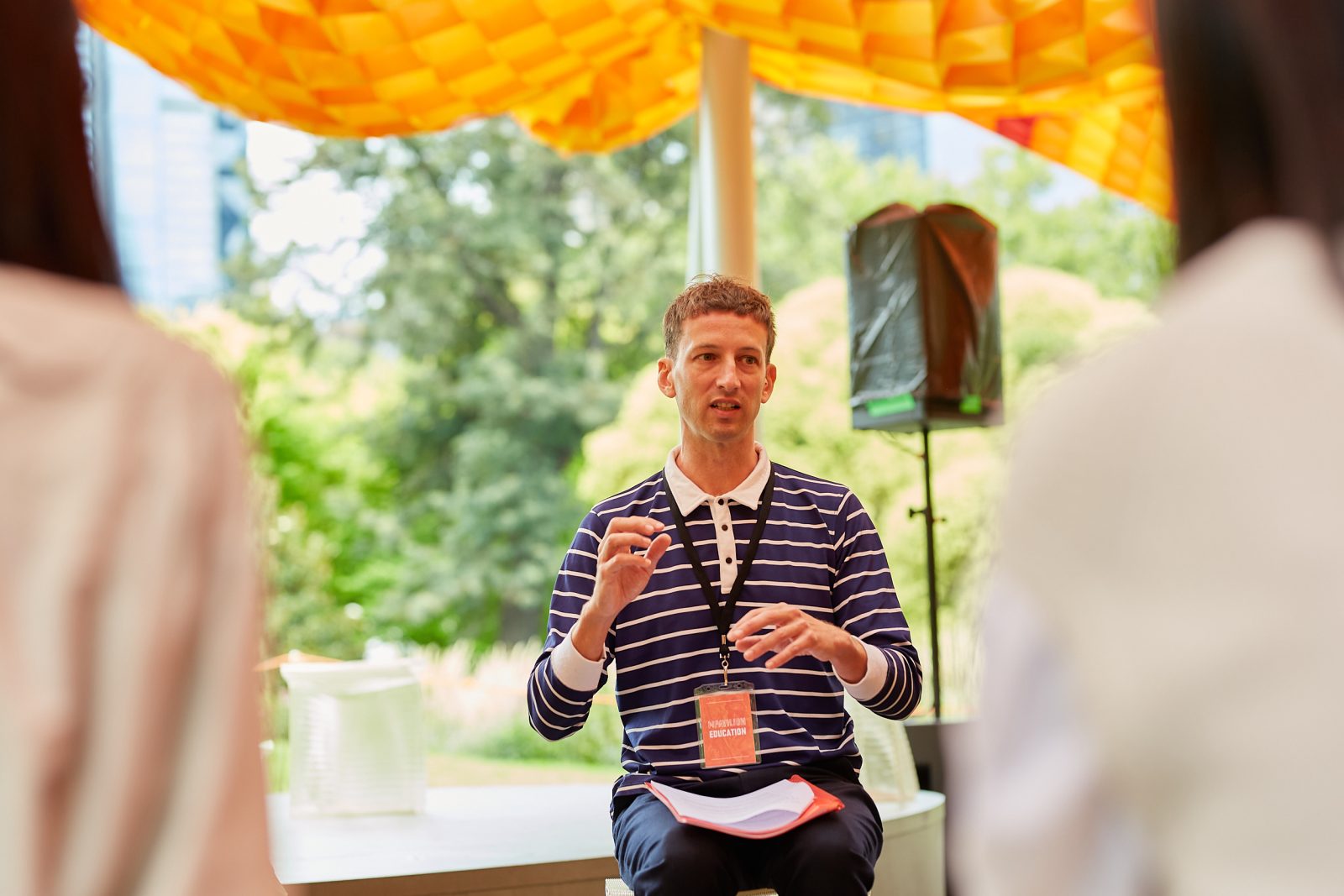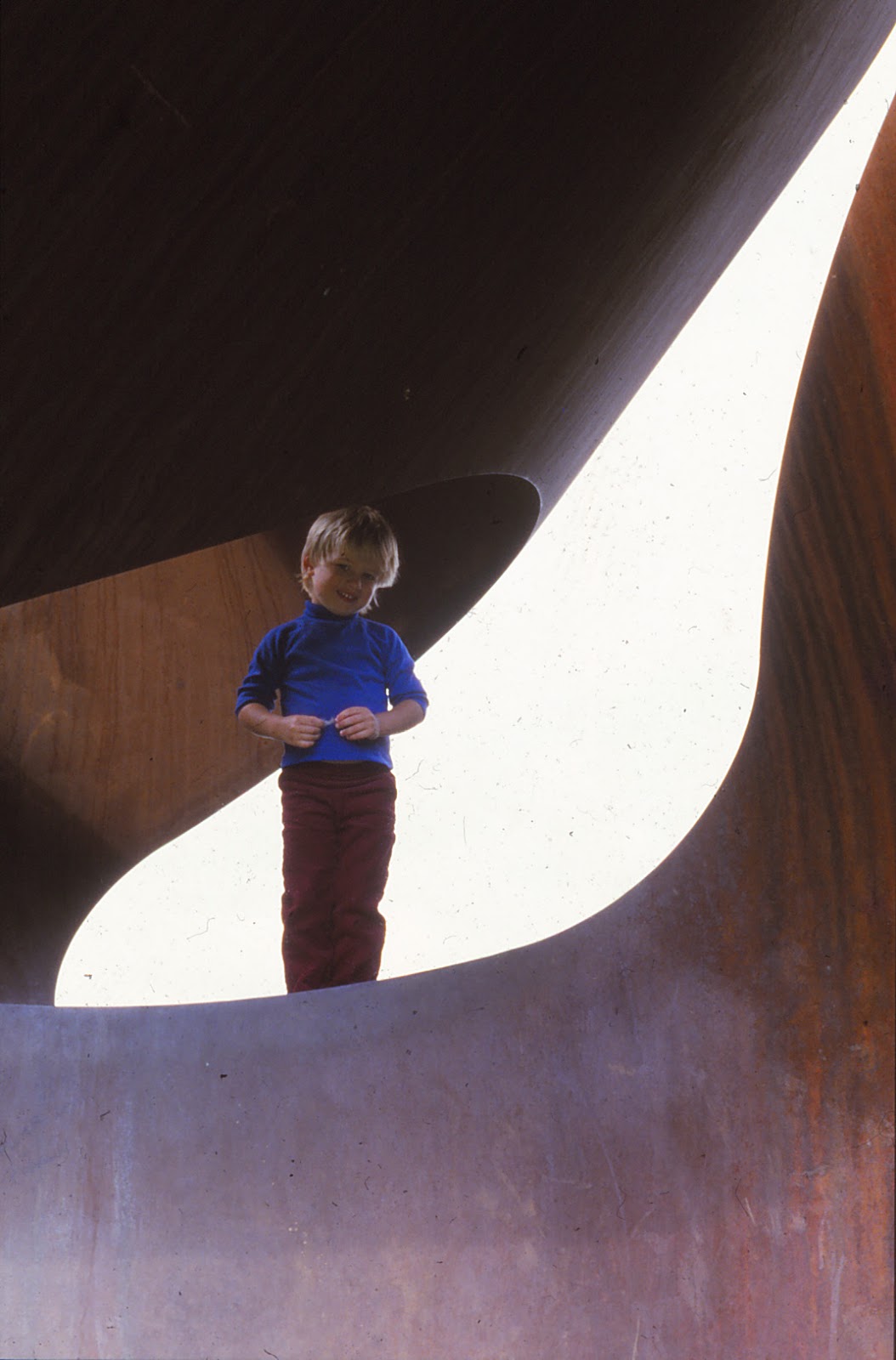Q&A: Andrew Atchison, MPavilion Education Manager

As MPavilion’s Education Manager, Andrew Atchison is focused on harnessing the power of direct encounters with works of architecture, art and design.
In the lead up to a new year of learning, we caught up with Andrew to learn more about his interest areas, his role at MPavilion and his approach towards education.
What interests you about design education? How did you begin working in this field?
Because design is so diverse it offers something for everyone, so for me, teaching students from diverse backgrounds, it is an excellent context to be working in. Also, because design practice spans the spectrum from simple solutions to technologically complex schemes, there are access points for all levels of ability and knowledge. The reality of working in an ever-evolving field with a rich, truly global history means there is always something new to learn, and that keeps my work interesting.I came to design education from a fine art background and I developed my teaching skills in contemporary art galleries. I have found that encounters with contemporary art and design are often similar because students are experiencing something new, unfamiliar and challenging. My goal is to show students how to approach situations that might at first seem strange with calm, confidence and curiosity.
Can you recall your earliest encounter with art and design?
My earliest encounter with art is captured in a photo of three year-old me climbing all over Clement Meadmore’s sculpture Dervish, which is still located on Southbank nearby to MPavilion. So I have been getting involved – arguably too involved – with art for a long time!
Trying to remember my earliest encounter with design, was probably in prep when my design was chosen for my primary schools annual Christmas card, which was exciting at the time.
Clement Meadmore’s sculpture Dervish
Can you provide some background on MPavilion’s Education Program? What is it, how long has it been running for, and what do you want students and educators to gain from the program?
The MPavilion Education season is free, caters to students from primary through to tertiary levels, and incorporates two core streams; INQUIRE, which engages students in inquiry-based discussion and questioning, and CREATE, which is a longer session and incorporates discussion and hands-on making. This year, the program has expanded to include professional learning for educators, and outreach, which will fund bus travel for schools that may not be able to access MPavilion otherwise.
The MPavilion Education program was first launched to accompany MPavilion 9 by all(zone), so it is still very fresh. It was developed as a way of offering students supported encounters with the best contemporary architecture and design culture, and to be accessible to all.
Ultimately, the MPavilion Education Program is underpinned by the belief that everyone has a stake in design culture, both now and into the future, and we want students to understand that too.
What does your typical workday look like?
A typical day for me is split between face-to-face teaching, and behind the scenes administration and development of the program. When onsite at MPavilion 10, I work with students and educators to tailor sessions that complement their learning goals. This season, groups will have the opportunity to discuss MPavilion 10, as well as the broader roles of architecture and design in society, and how they themselves can contribute toward designing their preferred futures. Some groups undertaking a CREATE session will also build their own model pavilions, exploring Tadao Ando’s approach to architecture through attention to geometry, simplicity and truth-to-materials.
When I am not onsite my time is spent at our offices in Cremorne planning the program and taking bookings. If you have ever spied Swiss contemporary artist Ugo Rondinone’s rainbow-coloured artwork Our Magic Hour from across Yarra – it sits on top of my workplace, and also I am very lucky to be surrounded by a fantastic collection of contemporary art in the offices.
MPavilion is a site-specific structure, grounded in the middle of the Queen Victoria Gardens. How does the Education Program make use of the pavilion and its surrounds?
Site was a key consideration for Tadao Ando, and students are encouraged to experience MPavilion 10 from a variety of vantage points in the Queen Victoria Gardens – elevated, from a distance, up close and from the interior. As a hybrid indoor-outdoor space, MPavilion 10 really is a multi-sensory encounter, and students are guided to consider not only what they see, but also hear, smell and feel. Birdsong, breezes, sun and the fragrances of nature are all part of the experience and inextricable from its site in the gardens.
What goes into the development of your student programs? Can you elaborate on your process and your approach?
I begin with research. In the lead-up to MPavilion 10 I read books about Tadao Ando, listened to lectures and studied his previous works. The more I know about each pavilion, the better equipped I am to answer questions and suit students’ particular interests – I like to be as adaptable as possible. Significantly, understanding the philosophy of each MPavilion architect is as important as their signature materials and techniques, and their’ biographies often contain fascinating details that can help bring their designs to life.
With each new season of MPavilion, I consider the relationship between the Country on which it is located. This approach is important across our organisation, and each education session begins with an acknowledgement of Country. This attention helps to ground the experience within a framework of cultural knowledge and respect.
What is the most fulfilling part of your job?
When students visit MPavilion I am meeting most of them for the first time, and I am usually only with them for ninety minutes at most, so it is quite a whirlwind. What I really enjoy is hearing feedback from teachers and students after their visit. If their experience at MPavilion has sparked further conversation I get a lot of satisfaction out of knowing that.
Tadao Ando’s structure marks 10 years of MPavilion. Do you have any standout memories of the pavilion from the last decade?
Of all the past MPavilions I spent the most time with MPavilion 9 by all(zone), so it is special to me. It was a vibrantly colourful presence in the gardens that seemed to communicate a feeling of implicit hospitality. The moments I remember best are when I would notice that people felt comfortable to walk up, settle in and make the space their own for a little while.
—
To learn more about the MPavilion Education Program, or to book a professional development session or a class excursion, click the button below.
Education Program
